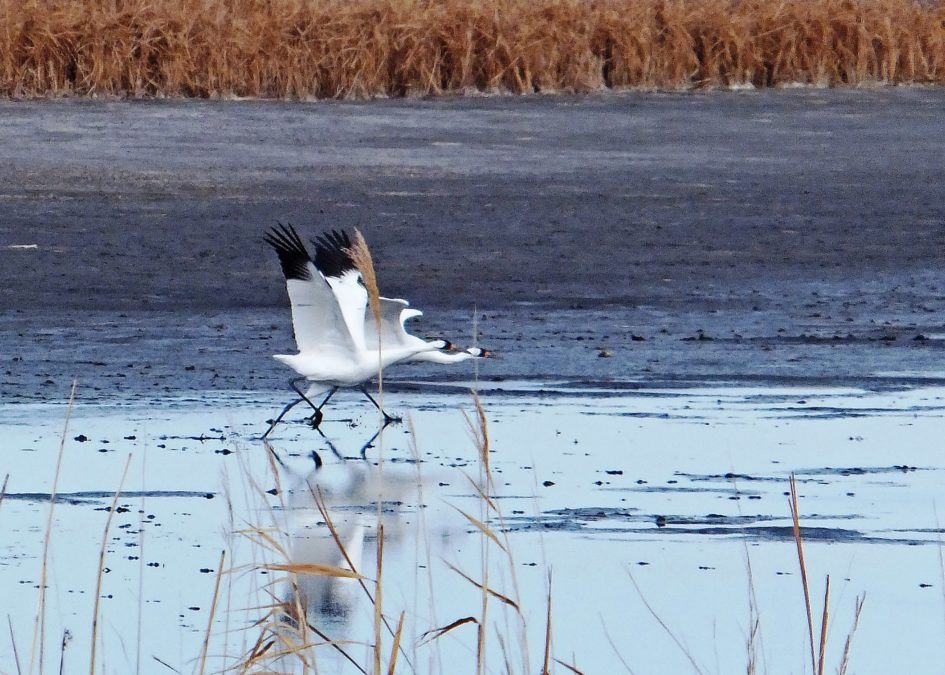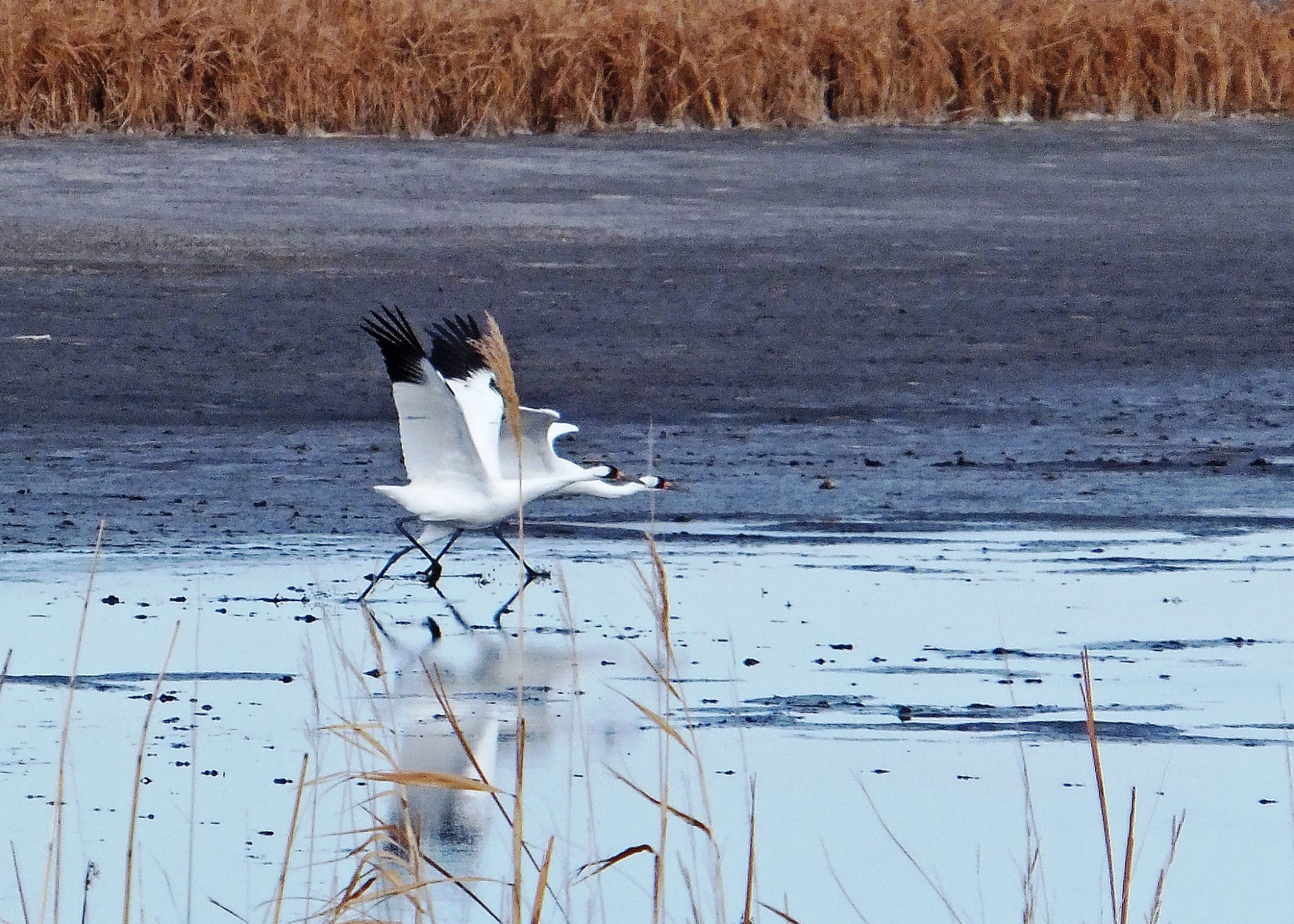A few weeks ago my column explained the transition of documenting bald eagle “sightings” from when they were an endangered species, until now when they are no longer endangered.
While bald eagles are of course still protected as a national symbol, they are common enough now that individual sightings no longer warrant a special report, though biologists do keep track of active eagle nests.
There is another large icon of the prairie that has not yet fully recovered from its brush with extinction, and that’s why biologists are still interested in actual sightings of whooping cranes as they migrate through North Dakota.
In 1860, it was believed about 1,400 whooping cranes existed in North America. By the mid-1940s, the population estimate was down to just 15 or so birds in existence. Through a variety of recovery efforts since then, the wild flock has slowly increased to a population of more than 400, but it is still one of the most endangered birds on the North American continent.
A good share of these wild whooping cranes winter in and around Aransas National Wildlife Refuge on the Gulf Coast of Texas. In spring, they migrate north, en route to nesting grounds at Wood Buffalo National Park, which straddles the border of Alberta and the Northwest Territories in Canada.
This migration route takes many of them over North Dakota, primarily during the month of April. Not all of them land in the state, but some do and for anyone who happens to see one, it could be a once-in-a-lifetime experience.
The endangered status of whopping cranes is why wildlife officials ask that anyone who sees them as they move through North Dakota should report sightings so the birds can be tracked. In mid-to-late April, it’s still possible to encounter these birds, particularly through the central part of the state.
Whoopers stand about 5 feet tall and have a wingspan of about 7 feet from tip to tip. They are bright white with black wing tips, which are visible only when the wings are outstretched. In flight, they extend their long necks straight forward, while their long, slender legs extend out behind the tail.
Whooping cranes typically migrate singly or in small groups and may be associated with sandhill cranes.
Other white birds such as snow geese, swans and egrets often are mistaken for whooping cranes. The most common misidentification is pelicans, because their wingspan is similar and they tuck their pouch in flight, leaving a silhouette similar to a crane when viewed from below.
Anyone sighting whoopers should not disturb them, but record the date, time, location, and the birds’ activity. Observers also should look closely for and report colored bands that may occur on one or both legs. Whooping cranes have been marked with colored leg bands to help determine their identity.
Whooping crane sightings should be reported to the U.S. Fish and Wildlife Service office at Lostwood National Wildlife Refuge at (701) 848-2466, Long Lake NWR at (701) 387-4397, the North Dakota Game and Fish Department in Bismarck at (701) 328-6300 or to local game wardens across the state.
Reports help biologists locate important whooping crane habitat areas, monitor marked birds, determine survival and population numbers, and identify times and migration routes.





All whooping cranes are wild. They are near the Upper Souris Wildlife Refuge probably six miles south and two miles east of the headquarters, and the number is approximately twenty, ten mating pairs. I have seen them in April and they do fly at approximately 1500 feet, maybe 2000 feet. A magnificent bird if there ever was one.
Have a nice day.